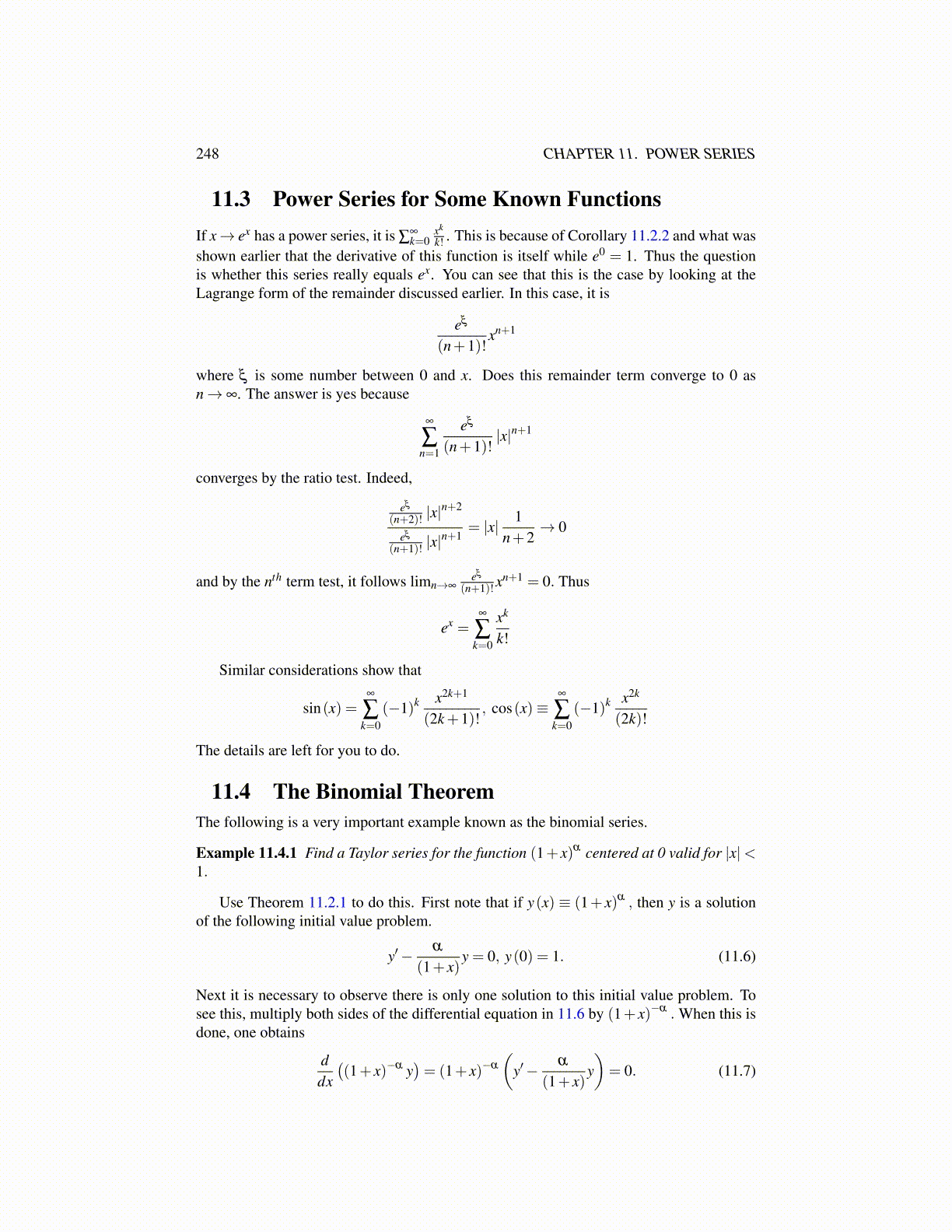
248 CHAPTER 11. POWER SERIES
11.3 Power Series for Some Known FunctionsIf x → ex has a power series, it is ∑
∞k=0
xk
k! . This is because of Corollary 11.2.2 and what wasshown earlier that the derivative of this function is itself while e0 = 1. Thus the questionis whether this series really equals ex. You can see that this is the case by looking at theLagrange form of the remainder discussed earlier. In this case, it is
eξ
(n+1)!xn+1
where ξ is some number between 0 and x. Does this remainder term converge to 0 asn → ∞. The answer is yes because
∞
∑n=1
eξ
(n+1)!|x|n+1
converges by the ratio test. Indeed,
eξ
(n+2)! |x|n+2
eξ
(n+1)! |x|n+1
= |x| 1n+2
→ 0
and by the nth term test, it follows limn→∞eξ
(n+1)! xn+1 = 0. Thus
ex =∞
∑k=0
xk
k!
Similar considerations show that
sin(x) =∞
∑k=0
(−1)k x2k+1
(2k+1)!, cos(x)≡
∞
∑k=0
(−1)k x2k
(2k)!
The details are left for you to do.
11.4 The Binomial TheoremThe following is a very important example known as the binomial series.
Example 11.4.1 Find a Taylor series for the function (1+ x)α centered at 0 valid for |x|<1.
Use Theorem 11.2.1 to do this. First note that if y(x) ≡ (1+ x)α , then y is a solutionof the following initial value problem.
y′− α
(1+ x)y = 0, y(0) = 1. (11.6)
Next it is necessary to observe there is only one solution to this initial value problem. Tosee this, multiply both sides of the differential equation in 11.6 by (1+ x)−α . When this isdone, one obtains
ddx
((1+ x)−α y
)= (1+ x)−α
(y′− α
(1+ x)y)= 0. (11.7)